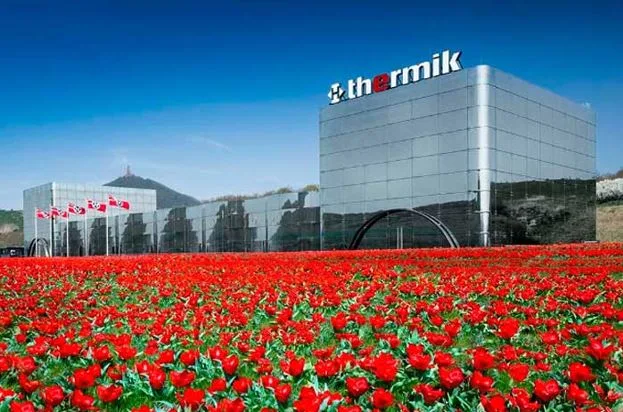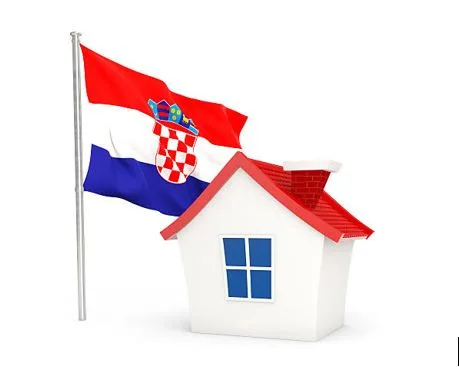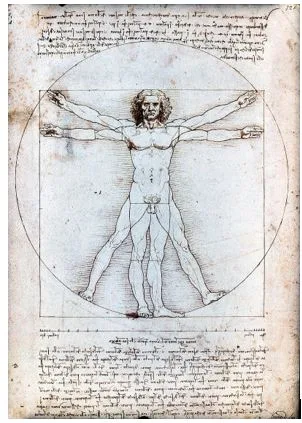How to Find Instagram Influencers That Actually Convert: Expert Tips
A surprising fact: 49% of Gen Alpha puts as much trust in influencers as their own family members for product recommendations.
The task of finding Instagram influencers who convert customers has become more challenging than before. Recent data shows that 87.5% of marketers struggle to find the right influencers for their brands and campaigns. The perfect Instagram partners can increase your reach, connect with new audiences, and build genuine trust around your products.
Reliable Instagram influencers post content weekly or more frequently. Their engagement levels tell the real story – you need to look at whether followers actually interact with posts or if the response is dead silent.
Brands have clear priorities while searching for local influencers. The numbers show sales leads at 35.6%, awareness at 24.4%, user-generated content at 18.9%, and community building at 12.4%. This piece will guide you through finding Instagram influencers who match your goals and deliver measurable results.
Why Instagram Influencers Matter for Conversions
Instagram has evolved into a conversion powerhouse where brands can build real connections. About 72% of users buy products they see on Instagram content, so understanding these digital creators is vital to your marketing strategy.
The power of influencer trust
Trust is the foundation of successful influencer partnerships. Unlike traditional ads, influencers build real relationships with their followers as time goes by. Brands can use this connection as a powerful recommendation engine.
The numbers tell an interesting story – 71% of consumers trust what influencers say, which makes these partnerships work better than traditional marketing. In the UK, three-fifths of consumers see their favorite social media personalities as real experts in their fields.
What makes people trust influencers? It comes down to being open and honest. About 71% of consumers say they trust influencers more when they’re upfront about brand relationships. People also value honest reviews, with 79% appreciating feedback that includes both pros and cons. This genuine approach leads to better conversions than purely promotional content.
How influencers affect buying decisions
Influencers have a clear and measurable effect on what people buy. Almost half (49%) of consumers make purchases daily, weekly, or monthly because of influencer posts. These numbers show their direct impact on sales.
The money speaks for itself. Companies typically earn USD 5.78 for every dollar they spend on influencer marketing. Some businesses see even better results – up to USD 6.50 per dollar invested. About 70% of businesses double their money at minimum.
Young people are even more likely to buy based on influencer recommendations. Gen Z consumers trust influencers more and shop through them more often. This makes them especially valuable since they have growing spending power and tend to stick with brands they like.
Types of influencers and their roles
You need to pick the right influencer tier to get the best results. Each type brings something different to the table:
- Nano influencers (1,000-10,000 followers): They might reach fewer people, but they get the highest engagement at 14.2% and turn about 7% of their engagement into sales. Their close-knit communities build real trust and relatability.
- Micro influencers (10,000-100,000 followers): These creators hit the sweet spot between reach and engagement (11.7%). Their followers see them as trusted advisors, which works really well for niche products.
- Mid-tier influencers (100,000-500,000 followers): More professional than micro influencers but still authentic, they reach more people while keeping decent engagement.
- Macro influencers (500,000-1 million followers): These social media stars can create huge demand and reach people of all types.
- Mega influencers (1 million+ followers): They work best for getting maximum visibility and running awareness campaigns for broad audiences.
The latest trends in 2024 show a move toward smaller creators – 75.9% of Instagram influencer partnerships now involve nano-influencers. This change reflects their better engagement rates and conversion potential compared to bigger accounts. While mega influencers might get more views, smaller creators often deliver better sales results through their authentic connections.
Common Mistakes When Finding Instagram Influencers
Instagram marketers, even the experienced ones, make crucial mistakes when selecting influencers for their campaigns. Your conversion rates and ROI will improve when you avoid these common pitfalls.
Focusing only on follower count
The influencer marketing landscape has transformed—creative content matters more than reach now. Brands often treat influencer selection like a numbers game. They choose creators with huge followings without considering their relevance or authenticity.
Recent data proves no correlation exists between follower count and post impressions. The correlation coefficient between these metrics is just 0.06, which suggests these metrics have no connection. An influencer’s follower count has nothing to do with their content’s actual visibility.
Small creators often deliver better results. Nano influencers (under 10,000 followers) build stronger, more personal connections with their communities. Their followers find them relatable, which leads to better engagement and conversion rates. Macro-influencers’ sponsored posts don’t perform as well in comparison.
Ignoring engagement quality
Raw engagement numbers tell only part of the story—the quality matters more. Successful brands review:
- Whether followers have real conversations in comments instead of generic responses
- If an influencer builds a movement rather than just promotes products
- Whether the creator’s content matches brand values naturally
Poor engagement quality shows through:
- Bot-like comments (“Great post!”) instead of thoughtful responses
- Unusually high engagement rates (over 30%) that hint at bought likes
- Quick drops in follower count after platforms remove fake accounts
High engagement gets harder as follower counts grow. So, micro-influencers maintain better engagement rates—their followers are twice as likely to “like” and ten times more likely to comment compared to accounts with over 1 million followers.
Using generic outreach messages
Copy-paste messages to creators are the quickest way to ruin potential partnerships. Research shows creators ignore brand outreach mainly because of generic templates.
Influencers won’t respond when:
- Messages lack a personal touch (using “admin” or “hey you”)
- Brands make copy-paste errors (sending emails with wrong influencer names and links)
- Outreach shows no understanding of their content or niche
Automated bots and scam accounts have made this problem worse. Creators are now more careful about unknown contacts. Good outreach needs research into the influencer’s style, values, and audience before making contact.
Brands get better campaign results when they treat influencers as creative partners instead of just content distributors. A personal approach shows you respect their work and boosts response rates, even if they don’t say yes right away.
How to Find Instagram Influencers That Fit Your Brand
The best Instagram influencers might be closer than you think. Your audience’s favorite creators can turn 7% of their engagement into actual sales.
Start with your own followers
Your most valuable influencers could already be interacting with your brand. A good first step is to check your tagged posts, story mentions, comments, and direct messages. These creators bring extra value because they know your product and create more authentic content.
Your most engaged followers deserve a closer look. Anyone who has 5,000 or more followers could become a potential partner. These existing fans are seven times more ready to cooperate with you compared to creators you’ve never contacted.
Use Instagram search and hashtags
Instagram’s built-in discovery features remain some of the best tools to find content creators in your niche. Generic hashtags like #influencer won’t give you targeted results. Your search should focus on specific hashtags such as:
- Industry-specific tags (#sustainablefashion, #skincarelover)
- Collaboration indicators (#giftedcollab, #ad)
- Niche community tags (#midsizefashionuk, #plantbasedprotein)
Instagram’s “Suggested For You” section in DMs or profiles helps you find related creators. The platform’s algorithm recommends relevant profiles based on your browsing habits. Your business account works best when you use it exclusively for industry-related content.
Explore tagged posts and mentions
Posts where creators tag or mention your brand show who already likes your products. You can also get into competitor pages to see their influencer partnerships through tagged content.
Creators who feature your products in organic content like #empties posts or reviews deserve special attention. These unprompted mentions show real brand appreciation and create great partnership opportunities.
Check influencer marketplaces
Influencer marketing platforms optimize your search process. These tools help you find influencers by filtering through niche, location, audience size, and engagement rates.
Upfluence, Brandwatch, Afluencer, Influencity, Heepsy, and Collabstr are popular choices. These services are better than manual searching because they give you verified metrics about audience demographics and performance data.
These platforms help you find creator profiles whose followers match your target audience’s age, location, interests, shopping habits, and social platform priorities. Audience alignment matters more than the creator’s personal style or niche if there’s enough overlap with your customer base.
Expert Tips to Connect and Convert
You’ve spotted some Instagram creators who might work well with your brand. Now comes the real challenge. Your success rate depends on how well you build genuine connections with these influencers. A thoughtful strategy makes all the difference.
Start engaging before you reach out
Smart brands build relationships with influencers before making any business proposals. Follow their account, like their posts, and leave meaningful comments on their content. This shows you actually care about their work instead of seeing them as just another marketing tool. Your response rates will improve by a lot when you take time to understand their style and audience before reaching out.
Choose email over DMs
Instagram might be where you’ll work together, but email works better at the time of first contact. Creators tend to respond more often to professional emails than direct messages. Look at their bio first – many creators list their business email there. If you can’t find an email address, Instagram DMs are your next best choice.
Make your message personal
Experienced creators ignore copy-paste messages quickly. Your outreach needs to:
- Reference specific content you liked (“Your recent campaign with ___ was amazing”)
- Show how your brand fits their style
- Use their actual name (not “Hey Admin” or other generic greetings)
A personal touch shows you value their work and gets better responses, whatever their initial answer might be.
Set clear expectations
The foundations of good influencer partnerships are built on transparency. Before you start working together, spell out:
- What you want to achieve and when
- The type of content you need
- How much you’ll pay
- Who owns the content and how it can be used
Being upfront about these details shows respect for the creator’s work. Here’s a useful fact: 71% of influencers charge less for long-term deals, so it’s worth discussing multiple post campaigns.
Give more than just money
The best brand-influencer relationships go beyond simple business deals. Creators love being treated as long-term partners instead of just promotional channels. You could offer:
- Special access to your brand team
- Shoutouts on your brand’s social accounts
- Learning opportunities through expert sessions
- First look at new products
Creators want their audience to see them as trusted advisors. Special discount codes for their followers help them add value while boosting your sales.
Note that authentic relationships take time to develop but are worth the effort. These expert tips will help you create partnerships that work for everyone – your brand, the creator, and their audience.
Real Examples of Influencer Campaigns That Worked
These case studies show how different brands achieved remarkable results with influencer partnerships. You can learn valuable lessons from their success stories.
Daniel Wellington’s micro-influencer strategy
Daniel Wellington revolutionized watch marketing by building a global brand from just USD 20,000 in 2010. The company skipped celebrity endorsements and gave free watches to thousands of micro-influencers instead. This smart move paid off because their 50% product margins made watch giveaways financially viable.
The brand’s success came from smart content reuse. They asked permission to use influencer photos everywhere—from product pages to social media. Their hashtag #DWpickoftheday sparked over 62,000 posts and created about 15 new organic content pieces daily.
The strategy worked so well that influencers started buying watches themselves, hoping to appear on Daniel Wellington’s official profiles. The company’s sales soared to one million watches worth USD 228 million in just three years.
Glossier’s founder-led influencer model
Glossier chose a different path to influencer success. This Instagram-native beauty brand turned its customers into brand ambassadors instead of working with external creators. They put real user content first rather than polished ads.
Customer feedback shaped their product development directly. Their first product—Milky Jelly Cleanser—came from six months of work with chemists after gathering extensive customer input. This customer-first approach built real trust with their audience.
Glossier stays true to its values in marketing. They prefer real people over professional models, which creates trust with modern consumers looking for honest recommendations.
Nike’s long-term partnership with Ronaldo
Nike shows the value of lasting influencer relationships through their partnership with Cristiano Ronaldo. This collaboration started in 2003 and spans two decades. The “lifetime” deal costs USD 1 billion but brings amazing returns—generating USD 474 million for Nike in one year alone.
Ronaldo’s massive social media presence powers this partnership’s success. He leads Facebook with 262 million followers across platforms. Through him, Nike connects with global audiences naturally and consistently.
Conclusion
Successful brand partnerships with Instagram influencers need more than just counting followers. This piece shows how real partnerships lead to actual sales instead of just views.
Quality engagement beats quantity every time. Nano and micro-influencers often get better results because their followers actually trust what they say. That’s why 75.9% of Instagram influencer partnerships now happen with creators who have smaller but more engaged communities.
Your best influencer partnerships could start with people who already follow you. These creators know your brand and create content that strikes a chord with their audiences.
Personal touches matter by a lot when you reach out to potential partners. Creators ignore generic messages, while carefully crafted communications show you value their work. Clear expectations and fair pay are the foundations of lasting relationships.
Success stories from brands like Daniel Wellington, Glossier, and Nike prove different methods work well when they match real brand values. Your choice between micro-influencers, customer ambassadors, or celebrity partnerships needs authenticity and consistency.
Finding Instagram influencers who drive real conversions isn’t about chasing trends or follower numbers. Building real relationships with creators whose audiences match your target customers works better. This audience match, combined with authentic content and clear goals, turns influencer marketing into a powerful sales engine for your brand.






